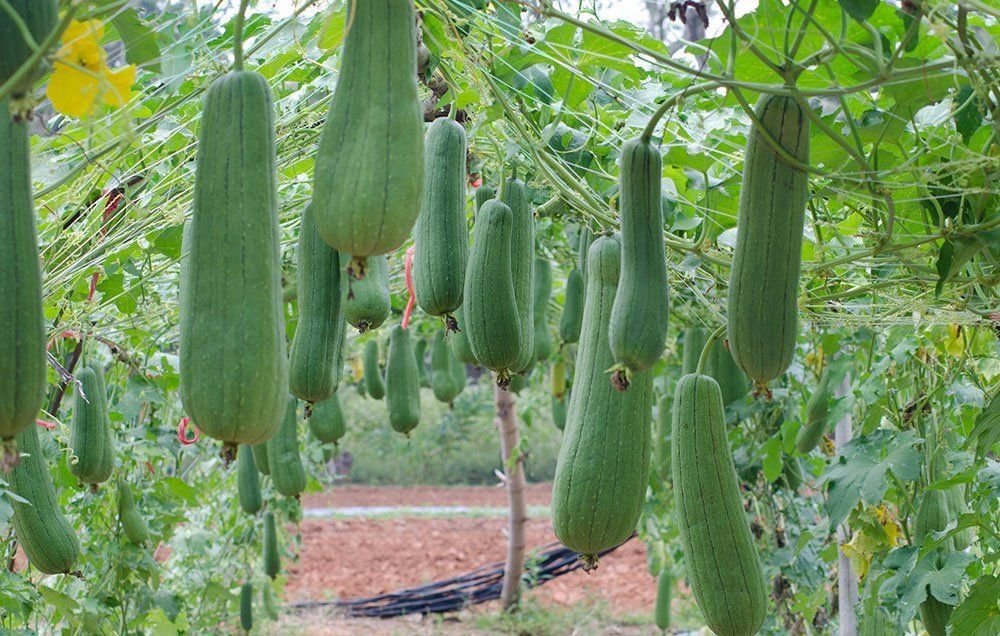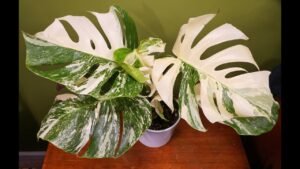Did you know that the luffa sponge you use in your shower comes from a plant? Luffa (also spelled loofah) is a type of gourd that can be grown in your garden. This versatile plant not only produces edible young fruits but also matures into the fibrous sponges perfect for scrubbing dishes, exfoliating skin, or crafting eco-friendly products. Whether you’re a seasoned gardener or a beginner, this guide will walk you through everything you need to know about growing and caring for luffa.
What is Luffa Sponge?
Luffa Sponge (Luffa aegyptiaca or Luffa cylindrica) is a fast-growing vine belonging to the cucumber family. Native to tropical and subtropical regions, it thrives in warm climates and can grow up to 30 feet long if given enough space. The plant is known for its yellow flowers and cylindrical fruits, which turn into the sponges we’re familiar with after drying.
Why Grow Luffa Sponge ?
- Eco-Friendly Sponges: Skip synthetic alternatives and create your own biodegradable luffa sponges.
- Edible Gourds: When harvested young, luffa fruits are tender and taste similar to zucchini.
- Sustainable Living: Perfect for gardeners looking to embrace zero-waste practices.
Step-by-Step Guide to Growing Luffa
1. Choose the Right Location
Luffa thrives in warm, sunny conditions. Select a spot that gets 6–8 hours of full sunlight daily. The plant is a climber, so provide a strong trellis, fence, or arbor for the vines to climb.
2. Prepare the Soil
Luffa prefers well-draining, fertile soil with a slightly acidic to neutral pH (6.0–7.0). Enrich the soil with compost or aged manure before planting to ensure nutrients are readily available.
3. Start Seeds Indoors
- Timing: Start luffa seeds indoors 6–8 weeks before the last frost date in your area.
- Soaking Seeds: To improve germination, soak seeds in warm water overnight before planting.
- Planting: Sow seeds in biodegradable pots filled with seed-starting mix, about 1 inch deep. Keep the soil moist and warm (70–85°F).
4. Transplanting Seedlings
Once the danger of frost has passed and the soil has warmed to at least 60°F, transplant seedlings outdoors. Space plants about 3 feet apart to allow for adequate airflow and growth.
5. Watering
Luffa Sponge requires consistent moisture, especially during its flowering and fruiting stages. Water deeply once or twice a week, depending on weather conditions, and mulch around the base to retain soil moisture.
6. Fertilizing
Feed luffa every 4–6 weeks with a balanced fertilizer or compost tea. Avoid excessive nitrogen, as it promotes leafy growth at the expense of flowers and fruits.
7. Training the Vines
Guide the vines onto your trellis or support structure as they grow. This ensures better air circulation, easier harvesting, and prevents the fruits from becoming misshapen.
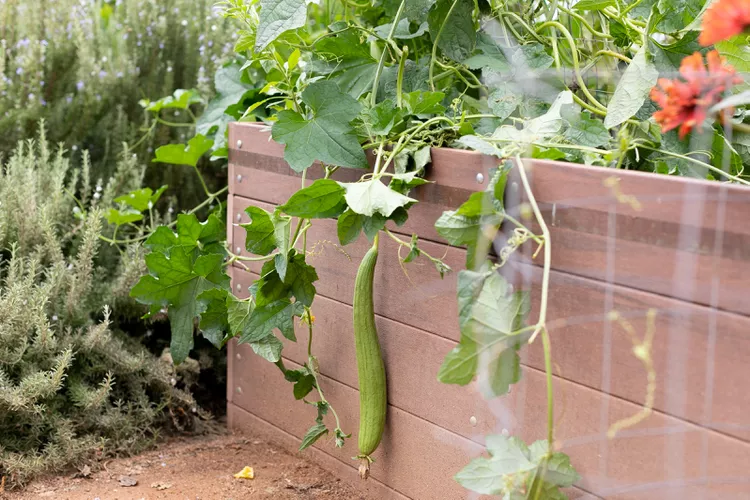
How to Harvest Luffa Sponge
For Edible Use
Harvest luffa when the fruits are 4–6 inches long and still tender. Larger fruits become tough and fibrous, making them unsuitable for eating.
For Sponges
- Wait for the fruits to mature fully on the vine until the skin turns brown and the fruit feels lightweight.
- Cut the fruit from the vine and peel off the skin to reveal the fibrous interior.
- Shake out the seeds, rinse the sponge in water, and let it dry in the sun.
Caring for Luffa Sponge Plants
Pests and Diseases
- Pests: Watch out for cucumber beetles, squash bugs, and aphids. Use organic pest control methods like neem oil or insecticidal soap.
- Diseases: Powdery mildew can affect luffa plants. Prevent it by ensuring good airflow and avoiding overhead watering.
Pruning
Prune dead or diseased leaves to maintain plant health and improve light penetration.
Seasonal Care
Luffa has a long growing season, typically requiring 150–200 frost-free days. In colder climates, consider using row covers or growing the plant in a greenhouse.
Creative Uses for Luffa Sponges
- Exfoliating Scrubs: Use in your skincare routine for natural exfoliation.
- Cleaning Tools: Perfect for scrubbing pots and pans without scratching.
- Craft Projects: Create eco-friendly crafts like bath mitts or soap holders.
- Composting: Once worn out, luffa sponges can be composted as they are 100% biodegradable.
Frequently Asked Questions
1. Can I Grow Luffa in Containers?
Yes, but choose a large container (at least 20 gallons) and ensure it has proper drainage. Use a sturdy trellis to support the vines.
2. How Long Does Luffa Take to Grow?
Luffa requires about 150–200 days to fully mature, depending on the climate and growing conditions.
3. Why Aren’t My Luffa Fruits Forming?
This could be due to poor pollination. Encourage pollinators by planting companion flowers or hand-pollinate using a small paintbrush.
Conclusion
Growing luffa is a rewarding experience that combines gardening, sustainability, and creativity. With proper care, you can enjoy the dual benefits of edible gourds and natural sponges, reducing your reliance on synthetic products. By following the steps outlined in this guide, you’ll be well on your way to harvesting your very own luffa.

